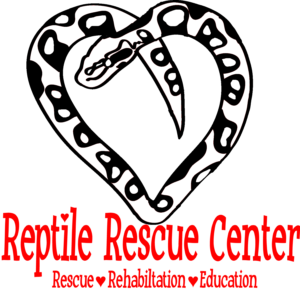Basic Info:
Common Name: Corn Snake
Scientific Name: Elaphe guttata guttata
Lifespan: 20+ years.
Size: Hatchlings- 8-12 inches; Adults- average 3-5 feet.
The Common Corn Snake, also known as the Red Rat Snake, is a species of colubrid snake found in North America. Like most colubrids, they are non-venomous constrictors. They prefer a temperate environment. Corn Snakes are docile, but fairly active.
They are a narrow-bodied snake, but should be nice and round if properly fed. Females are usually somewhat larger than males, but external appearance is not a reliable way to guarantee gender. To be sure of the sex of your snake, an experienced professional can “probe” it for you.
Corn Snakes are very common in the pet trade. Their docile nature and manageable size makes them a popular “beginner” snake.
Habitat In Captivity:
Enclosure: There are a couple different options for housing your Corn Snake. A glass aquarium or tank can make a suitable home. You can also use a commercially made reptile enclosure. Sizes and styles vary – from ones that are clear like tanks to enclosed plastic or pvc cages.
The size of your enclosure will depend on the size/age of your Corn Snake. The general rule of thumb is that the length of the enclosure should be about 2/3 the length of your snake. If you get your snake as a baby, you will need to upgrade cage sizes at least once in its life. Young snakes do best in smaller enclosures – a 10 gallon tank or equivalent-sized reptile enclosure is perfect. As your snake grows, upgrade to a 20 gallon long tank or equivalent. Larger adults should be housed in 40-75 gallon tanks. Corn Snakes are primarily surface-dwelling snakes, so length and width of the enclosure will be more important than height.
Substrate: There are several suitable options for substrate in Ball Python enclosures, and each have their own pros and cons. Cage “liners” such as newspaper or reptile-carpet are easy to clean, but will not hold humidity. Aspen shavings, cypress mulch, coconut fiber substrate (EcoEarth, etc), and repti-bark are also suitable substrates that will provide more enrichment for your snake. A natural substrate may help provide more humidity in the enclosure, and may be more absorbent of waste. With any type of loose substrate, care should be taken when feeding to prevent the snake from swallowing anything nondigestable.
Temperature: All reptiles are ectothermic or “cold-blooded”, meaning that they do not have a normal body temperature and do not regulate their body temperature themselves. Instead, they regulate their body temperature through external means, and are reliant on environmental heat sources. Simply put, this means that you will have to provide a heat source for your snake, as well as a temperature gradient so that the snake can move around and choose what temperature he or she needs.
There are two types of heat that are important for your Corn Snake – ambient temperature and surface temperature in the “basking spot”. Getting the temperatures right can sometimes be tricky, especially for the novice reptile-keeper. We recommend belly-heat for Corn Snakes, accomplished either by an under tank heater or heat tape. Your local pet store should carry under tank heat pads, and heat tape is available from online suppliers. Both should always be controlled by a thermostat (proportional or on-off), and temperature should be monitored by a digital thermometer with a probe over the heat source, or with a temperature gun. Heat bulbs are not very useful for providing belly heat, but can be used to help raise the ambient air temperature; they usually lower humidity however, so extra measures must be taken to counter-act drying out the enclosure. We prefer to just raise the temperature in the room where the snake is. The ambient air temperature should be about 80°F. The surface temperature on the warm, basking side should be 85-89°F.
Never use “hot rocks” – they are NOT safe for reptiles.
Lighting Requirements: Corn Snakes have no UV light requirements. If you would like to provide lighting for viewing, make sure to allow for approximately 12-14 hours of “daylight” and 10-12 hours of “nighttime” for a proper day-night cycle.
Humidity: The humidity in the enclosure should be about 40-60%.
Cage Furnishings and Accessories: Enclosures should be outfitted with at least one hide box on either end (one on the warm side and one on the cool). Covering the back and sides of a glass enclosure will also help minimize stress and increase feelings of security. Other accessories such as decorations and climbing logs are optional but will certainly be utilized by your snake.
Food and Feeding:
Diet: Corn Snakes are rodent eaters. Babies should be fed pinky mice and then eventually feed on larger mice (or young rats) as adults. The size of your snake’s prey will increase as the snake grows. A general rule of thumb is to feed them a rodent that is about as big around as the snake’s girth.
Feeding: Baby Corn Snakes should be fed approximately once every 5-7 days, and adults should eat once every 7-10 days. If possible, it is best to feed your snake pre-killed or frozen/thawed food items. NEVER feed live prey to your snake unsupervised, as the prey can fight back and seriously injure the snake. After feeding, do not handle your snake for 48-72 hours to allow him/her time to digest the meal.
Water: A bowl of fresh water should be provided at all times. Change the water and disinfect the bowl at least every other day.
Supplements: Since rodents are a complete diet, healthy Corn Snakes will not need any other supplements or vitamins.
 Follow
Follow


